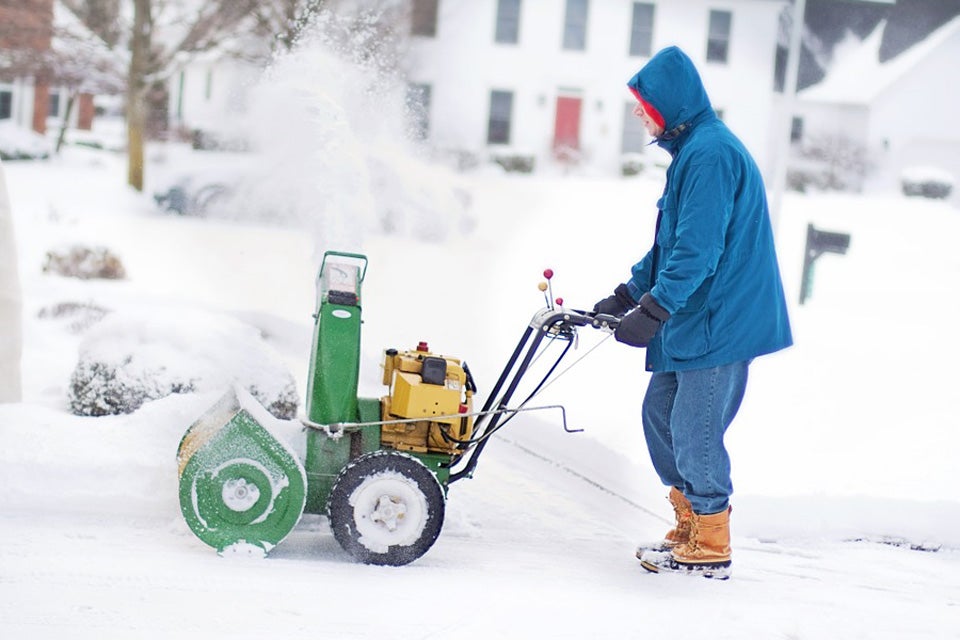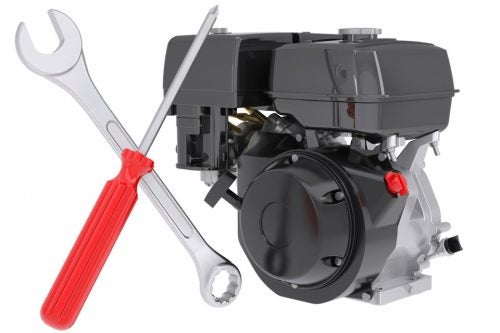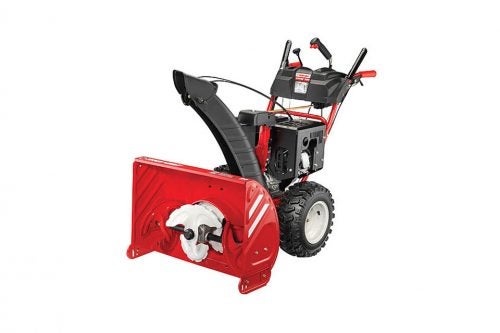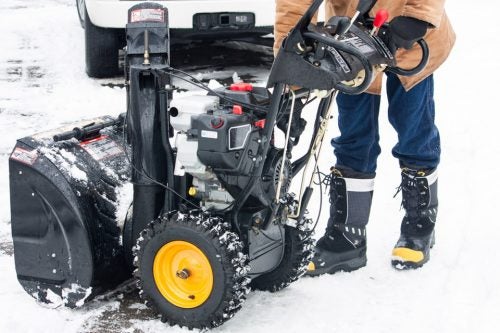A snowblower is much like a car – if you don`t take care if it then you can`t expect it to start when you need it to. When you do run into problems knowing snowblower troubleshooting basics can help you get your machine back in top operating condition so you can depend on it to be ready when you need it.
Step One: Choke and Throttle
Many problems with starting snowblowers arise through improper choke and throttle usage. When you start a snowblower the throttle needs to be in the fast position, so that gasoline is sent to the engine. The choke is only needed when the snowblower is cold. If you`ve been running it for a while and are restarting you can turn off the choke.
Step Two: Check the Gasoline
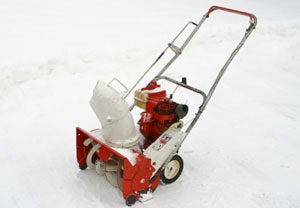
If you can`t get your snowblower started, or if it sputters and dies once started then you may have a gasoline issue. Check that the tank has gasoline in it and ensure you are using the correct gasoline in your snowblower. Failure to use properly rated gasoline can result in frozen gas lines – in which case you should attempt to warm up your machine (like in a heated garage), get it started and then put the right gas in for future use.
Issues with starting a snowblower at the beginning of the season may be a result of poor preparation last year. If a snowblower is left over the summer with gasoline in it, a stabilizer needs to be added to ensure that deposits don`t build up on the gas line and in the carburetor. When you are preparing your snowblower for storage simply add the stabilizer to the gas tank and let it run for a few minutes.
Step Three: Spark Plugs
If you are getting a rough start or poor performance from your snowblower you may need to take a look at the spark plugs. Dirty or poorly-gapped plugs will make the machine run badly, or it may be difficult to start. Clean or replace the spark plugs, ensuring that they have the proper gap, and you should see an improvement in performance.
Step Four: Carburetor
The job of the carburetor is to mix fuel with oxygen and then send it to the spark plug for firing. Over time deposits can develop that can hinder carburetor performance, or it can restrict the flow of fuel. Additionally, your carburetor may need to be adjusted to ensure the right mixture. Removing the carburetor from a snowblower is fairly straightforward and it can be cleaned and adjusted before you replace it.
Step Five: Air and Fuel Filters
If you have uneven acceleration, or your snowblower periodically dies for no reason, then you may have a clogged air or fuel filter. An air filter can usually be tapped against a hard surface to dislodge debris, but both filters should be replaced periodically.
Step Six: None of the Above
Unfortunately, unless you are a mechanic or mechanically inclined you may at some point need to get help with snowblower repair. Look for a qualified and reliable mechanic in your area, and make sure you get a quote before they begin work. If your snowblower is getting older, it may make more sense to replace it than head down the snowblower repair gauntlet unless you are sure it will remain reliable.
